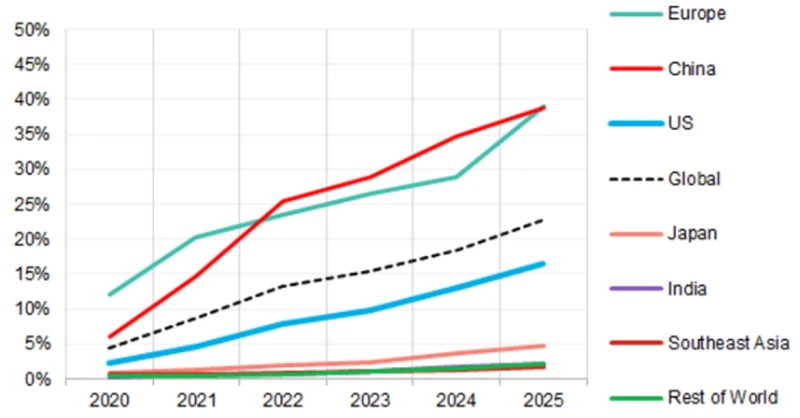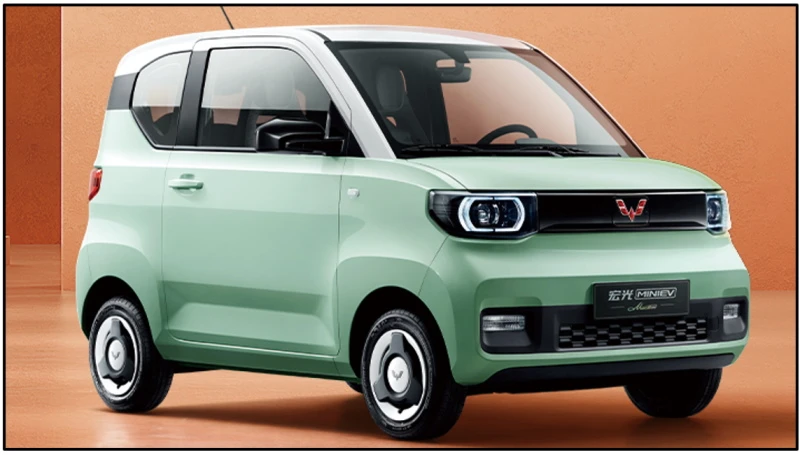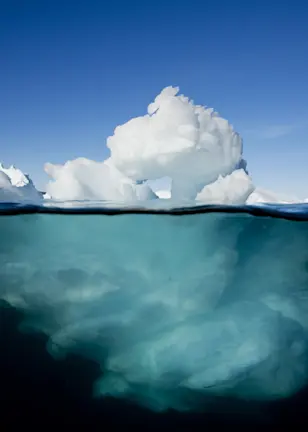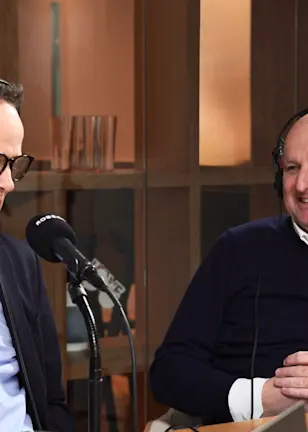Global EV manufacturing arms race is underway
The rise of electric vehicles (EV) is relentless. The International Energy Authority (IEA) projects that EV sales will grow 35% year on year in 2023 to 14 million units accounting for 18% of global new car sales. The industry’s rapid growth has been underpinned by the parallel development of a manufacturing ecosystem in China supplying the batteries and related drivetrain components to global automakers like Tesla, VW, Geely, GM (SAIC), and BYD.
US and European automakers are investing to build their own manufacturing base to service the EV space with many commited to aggressive schedules to start replacing internal combustion engine (ICE) product lines with EVs in the next decade. US geopolitical rivalry with China is complicating the situation with poltical and legistlative moves to onshore manufacturing of key technologies, or at least source from outside China.
This could make South Korea, which boasts three global battery makers, and successful EV brands in Hyundai and Kia, a key swing supplier for the whole EV industry, a possibility we believe has been undervalued by investors.
The state of play
China’s dominance in the EV supply chain reflects the consumer market for electric vehicles where it’s also the world’s biggest, with significant volume in small and mid-size segments rather than at the premium-end where EVs have penetrated so successfully in the US and Europe.
Figure 1: EV share of new passenger vehicle sales by market

Source: BNEF
Sustained policy support including subsidies and legislative cut-off dates for ICE sales are the main drivers behind the growth of EVs. The total cost for manufacturing a compact EV is still 45~50% higher than comparable ICE cars due to high cost of the battery pack which accounts for 40% of the total costs.
In China for example, subsidies encouraged strong growth of EVs in recent years, and EVs in China are typically smaller than in other markets. In 2021, the sales-weighted median price of EVs in China was only 10% more than that of ICE cars, compared with 45~50% on average in other major markets. A good example is the best selling EV in China, the SAIC Wuling Hongguang Mini EV which retails between USD 4,800 and USD 14,700 depending on the specification.

Source: SAIC GM
The Wuling mini EV was launched in July 2020 with a 13.8 kWh battery (vs 75 kWh for a standard Tesla Model S by way of comparison) and its cumulative global sales were 1.1 million units by January 2023.
China stops subsidies, just as the US ramps them up
From January 2023, the Chinese government has ended EV subsidy program which began in 2010 with the value proposition of EVs now well established. EV subsidies in many European counties have also been reduced or eliminated.
This is in contrast with the US market, which is just beginning its electrification subsidy efforts and rolling out tax credits thanks to the Inflation Reduction Act (IRA) which became effective in August 2022. The act will funnel USD 370 billion into subsidies for American’s energy transition, including tax breaks for US-made electric vehicles and batteries. Under IRA, EV and battery makers have to meet certain requirements for both the critical minerals and battery components contained in the vehicle to be eligible for a USD 7,500 tax credit. To qualify for the tax credit in 2023, IRA requires 40% of critical material in a battery to come from the US or a country with close ties to the US That percentage will rise each year until it reaches 80% in 2027. This is designed to boost onshoring, and will primarily impact inputs sourced from China.
The subsidies are expected to see a leap in US EV penetration in a market already boosted by price cuts by major brands, led by Tesla1. The IEA expects 50% of new car sales to be EVs in the US in 2030, compared to 12% in 2023.
Battery sector growth to accelerate further
With battery capacity per car in the US likely to be higher than in China, rising sales in the US are likely to have a significant impact on the battery sector, which is already expanding fast. In 2022 the IEA said demand for EV batteries rose by 65% to 550 gigawatt hours.
Under IRA, vehicles made with components manufactured in “foreign entities of concern”, including China, would be ineligible after 2024 for generous consumer tax credits. The list of nations with which the US will give preferential treatment with regards to critical minerals includes mineral exporters like Australia, Peru and Chile, but with only South Korea and Japan with significant EV battery sectors.
Figure 3: Battery supplier market share

Source: SNE Research
The landscape ex-China shows South Korea’s battery sector is already in a strong position through LGES, SK ON and Samsung SDI with the only China supplier in the top 5 being CATL.
With the exclusion of China from IRA, the rising EV market in the US market will inevitably raise demand for batteries from South Korean battery markers. The combined capacity of the three South Korean companies in the United States will surge 11-fold to 442 GWh by the end of 2025, which will increase South Korean companies EV battery market share in U.S. to 70% in 20252.
According to LGES, the North America market for EV batteries is set to be the world fastest growing this year and with China effectively dominated by domestic suppliers, it’s the primary target for growth for LGES3.
South Korea’s input advantage
A significant positive for South Korea in the battery space is the presence of large domestic input suppliers. Cathode materials are a major strategic item that accounts for 40 to 50% of EV battery costs and South Korea hosts some leading cathode material companies. Automobile companies such as GM and Tesla have strengthened cooperation with cathode material companies along with battery companies, but South Korean battery makers have historic strong relationships with these suppliers that give them a competitive advantage, in our view. SNE Research predicts that the global cathode materials market will grow form USD 32 billion in 2022 to USD 83 billion in 2030.
Figure 4: Battery inputs USD value growth projections

Source: SNE research
China is in a dominant global position regarding all these inputs, with South Korea and Japan the only rivals, and this could give South Korean and Japanese suppliers pricing power with US customers in the future.
Figure 5: Source of battery inputs in 2022

Source: SNE Research
Overweight South Korea
In our emerging markets equity strategies, we remain strongly overweight in South Korea. The macro fundamentals are relatively strong and stable, while South Korea was also among the frontrunners in raising interest rates to counteract the sharp rise in inflation seen across the world. South Korea has also been at the forefront of green growth initiatives, and they have a comprehensive policy framework for sustainable growth in both the short and long term. This will benefit many South Korean industries, especially those that operate in the export space as South Korea has a wide exposure to the green energy theme. Robeco’s emerging markets strategies have thus been increasing exposure to the South Korean green energy theme especially via investments in the ex-China EV supply chain.
Footnotes
1 Will a price war accelerate the switch to electric cars? – Financial Times, 7 May 2023
2 In the Global EV battery race, Korea makes big bet on Sun Belt, Battery News, 26 Dec 2022
3 South Korea’s EV battery leader bets on US growth to dethrone China rival”, Financial Times, 1 March 2023
獲取最新市場觀點
訂閱我們的電子報,時刻把握投資資訊和專家分析。
Important information
The contents of this document have not been reviewed by the Securities and Futures Commission ("SFC") in Hong Kong. If you are in any doubt about any of the contents of this document, you should obtain independent professional advice. This document has been distributed by Robeco Hong Kong Limited (‘Robeco’). Robeco is regulated by the SFC in Hong Kong. This document has been prepared on a confidential basis solely for the recipient and is for information purposes only. Any reproduction or distribution of this documentation, in whole or in part, or the disclosure of its contents, without the prior written consent of Robeco, is prohibited. By accepting this documentation, the recipient agrees to the foregoing This document is intended to provide the reader with information on Robeco’s specific capabilities, but does not constitute a recommendation to buy or sell certain securities or investment products. Investment decisions should only be based on the relevant prospectus and on thorough financial, fiscal and legal advice. Please refer to the relevant offering documents for details including the risk factors before making any investment decisions. The contents of this document are based upon sources of information believed to be reliable. This document is not intended for distribution to or use by any person or entity in any jurisdiction or country where such distribution or use would be contrary to local law or regulation. Investment Involves risks. Historical returns are provided for illustrative purposes only and do not necessarily reflect Robeco’s expectations for the future. The value of your investments may fluctuate. Past performance is no indication of current or future performance.



















